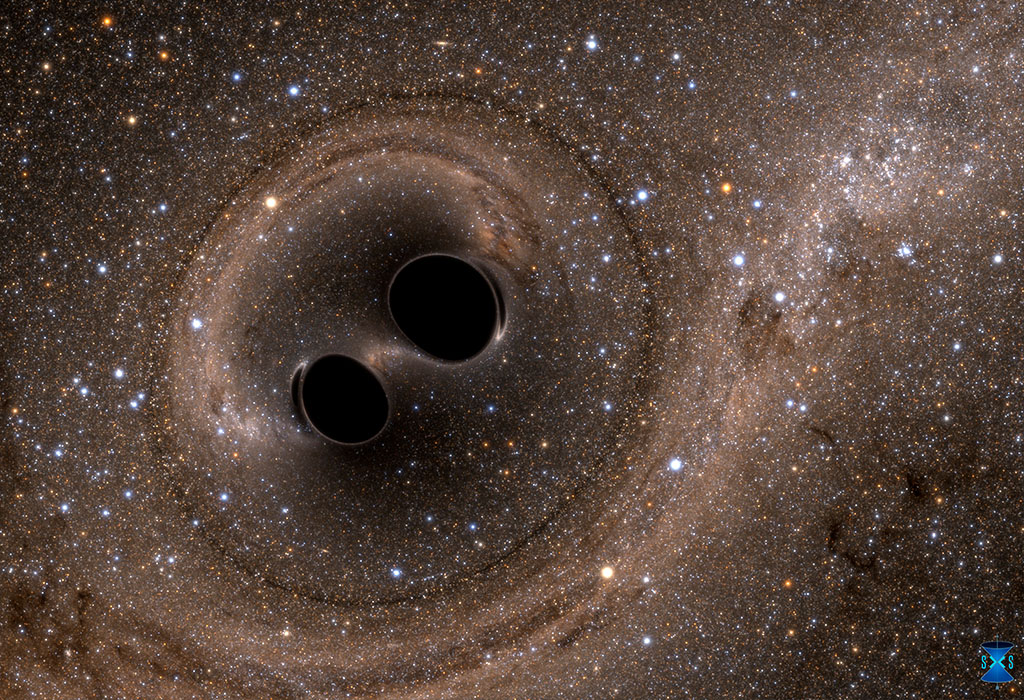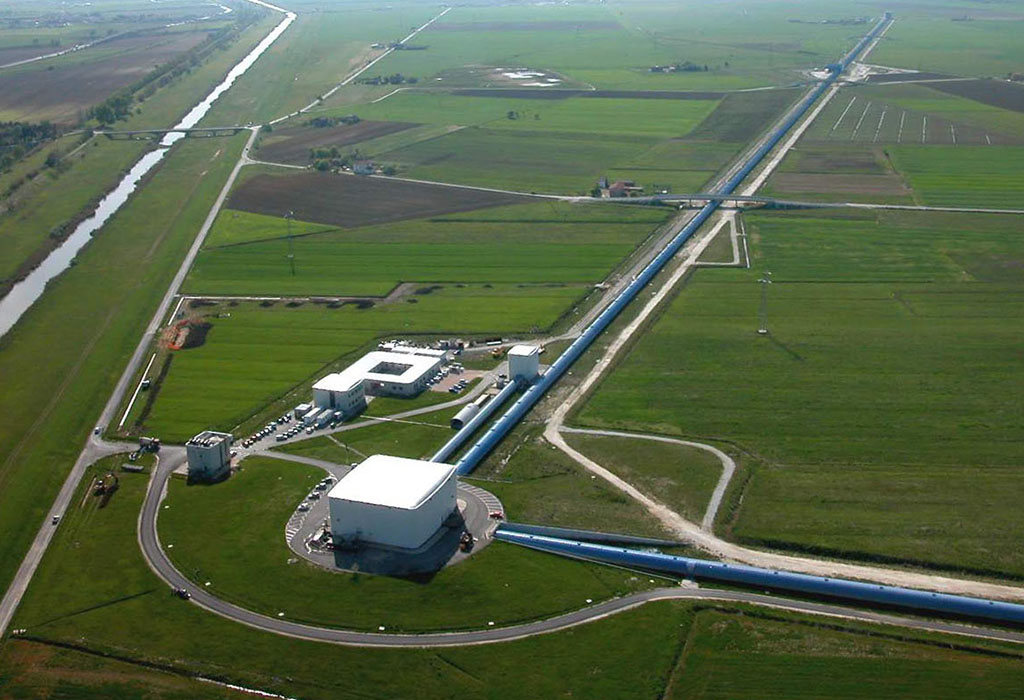When stars collide
A new announcement today from OzGrav (The ARC Centre of Excellence for Gravitational Wave Discovery), CAASTRO (The ARC Centre of Excellence for All-sky Astrophysics) and the LIGO-Virgo teams heralds a new era in the world of gravitational wave astronomy and what it can tell us about our universe.
Signals detected by the teams, complemented by observations from other telescopes around the world, combine to tell the story of a collision on a grand scale—the first ever observation of two neutron stars merging.
But what does this mean, and where does gravity come into it? A hundred years ago, Albert Einstein came up with the idea that gravity is not a static and unchanging force—it’s actually a fundamental part of the structure of the universe. Spacetime curves and twists as objects move and jostle about, creating minute ripples which are called gravitational waves. This means we should be able to detect them—something Einstein thought would never happen.
But last year, the Laser Interferometer Gravitational-wave Observatory (LIGO) team did just that, announcing in February 2016 observations of a signal that matched what you’d expect to see from the collision of two black holes that were around 29 and 36 times the mass of the sun.

Now, when two black holes merge, despite the incredible amounts of mass involved, and their enormous gravitational affects, you don’t see too much. Being ‘black’, they don’t emit standard forms of radiation like light or radio waves—all they send out are ripples of gravitational waves that sweep though the universe.
Since that first detection, there have been three more discoveries of black holes, which means that there’s a whole (ha!) lot more black holes out there than we previously thought.
But this new discovery is different. The gravitational wave signal didn’t look like the ones from those black hole mergers, but more like the collision of something very different—two neutron stars.
Neutron stars are incredibly dense, massive (in terms of mass, not size) objects that form when stars collapse in on themselves in supernova events. Over time, gravity tightly compresses the remaining material in these exploded stars and the protons and electrons combine to make neutrons. They are so dense that a single teaspoon of a neutron star would weigh a billion tons and they exert an extremely strong gravitational pull.

So when neutron stars merge we’d expect to see some pretty dramatic results. Not only would you see some sweet gravitational waves but, because they are composed of matter, the merger would also produce detectable electromagnetic signals that other types of telescopes—ones that detect visible light, gamma rays, X-rays or radio waves—would be able to pick up. This means that different types of observations can be combined to enhance the overall understanding of how the event unfolded. Every observation is a different piece of the puzzle that, combined, produces a much more complete picture.
Using a gamma-ray telescope, you might hope to see a gamma-ray burst. This is a super-bright explosion of energy that typically lasts from between a few milliseconds to around a minute. Gamma-ray bursts are one of the most explosive and cataclysmic events in the universe. They occur pretty frequently, but until now it’s been one big mystery as to what causes them.
Gamma-ray bursts can also produce an afterglow, a lingering energy signal that persists at lower energy levels, such as X-ray, visible and radio wavelengths of the electromagnetic spectrum. The gravitational waves appear first, as these are generated at the initiation of the collision event. So when the LIGO-Virgo team detects them, they can tip off the other observational telescopes, which then scramble to point their telescopes into the right region of the sky.
And this is exactly how the science behind this revolutionary announcement unfolded. Read more about the buzz that totally shook up the global astronomical community over the past few months.





